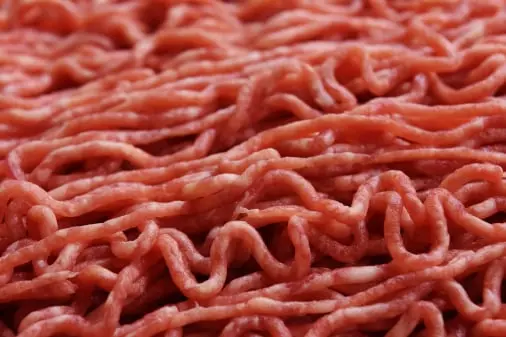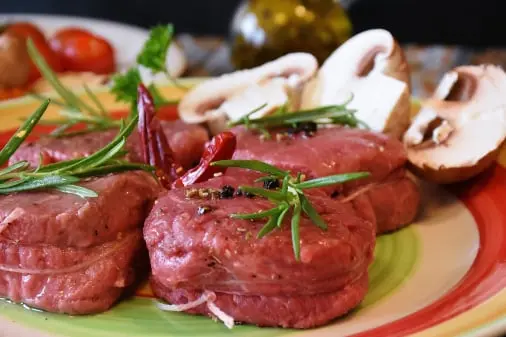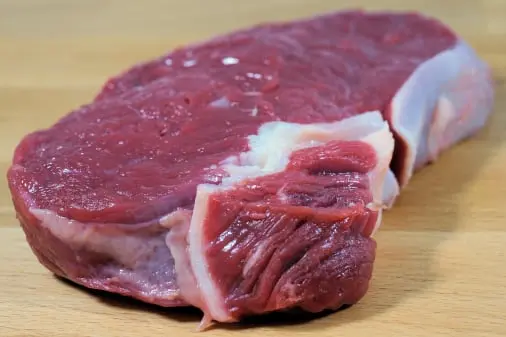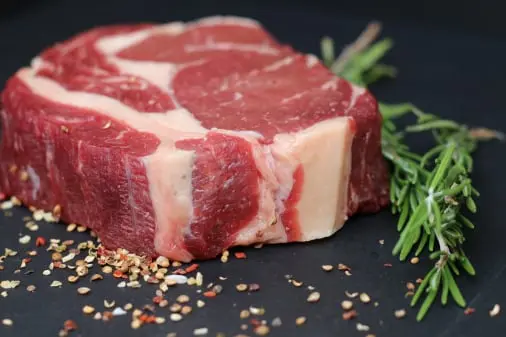Meat quality control app: with A.I. powered quality inspections.
Meat quality control app with AI quality management for better quality meat packing, processing, storage. Manage meat quality, traceability, inventory, labels, shipping, sales and meat export.

Meat Supplier quality inspection & management
Manage incoming livestock in unlimited pens; all animals issued tracking number, print / email livestock delivery receipt. Manage packaging (crates, cartons, labels, bags), receive alerts when inventory needs re-ordering. Inventory audit trail and tracking. Unlimited inventory items. Bar-code inventory management.
The continuous demand for high standards of quality assurance in the meat production of today and tomorrow calls for development of new tools capable of meeting such demands. The present paper aims to re-think the traditional way of using feeding as a quality control tool in the production of meat and to introduce the potential of a nutrigenomic approach as a first step in the development of pro-active quality control systems which fulfil future demands from industry and consumers. A few chosen examples present how specific feeding strategies can manipulate (i) muscle protein turnover and thereby meat tenderness as well as the cost and sustainability of the production and (ii) muscle energy levels at slaughter and thereby the pH decline, water-holding capacity and the sensory characteristics of meats. The examples are discussed in relation to exploiting essential and basic understanding of physiological and physical processes, which can subsequently be included in a systems biology line of thought of importance for development of unique decision support systems in future meat production.

Meat Quality inspections during production
View App Specifications.
Perform stock-takes any time by category or storage location. Know how much inventory (livestock, sides, finished product, and packaging materials) you have in real time, even search by storage location. Report by product line and storage location or rail, or product category. Manage the meat ageing process and ensure correct aged meat is provided for each customer.
Variations of fresh meat quality exist because the quality traits are affected by various intrinsic and extrinsic factors. Because the meat quality is basically dependent on muscle fiber characteristics, numerous studies have reported the relationship between quality traits and fiber characteristics. Despite intensive research, the relationship is yet to be fully established, however, the present knowledge suggests several potential ways to manipulate muscle fiber characteristics to improve meat quality. The present paper reviews the definition of fresh meat quality, meat quality traits and variations of meat quality. Also, this review presents recent knowledge underlying the relationship between fresh meat quality traits and muscle fiber characteristics. Finally, the present work proposes several potential factors including breed, genotype, sex, hormone, growth performance, diet, muscle location, exercise and ambient temperature that can be used to manipulate muscle fiber characteristics and subsequently meat quality in animals.

Meat Quality control & management
Use inexpensive tablet terminals so each team member can see where they are in the processing stage and rapidly record data for their tasks regardless of position in processing chain (weigh box, knock box, head removal, evisceration, inspection, further processing, retain rail, scale, packaging, shipping and export).
Meat quality has always been important to the consumer, and it is an especially critical issue for the meat industry in the 21st century. As consumer demand for high quality meat is increasing in most countries, the meat industry should consistently produce and supply quality meat that is tasty, safe and healthy for the consumer to ensure continued consumption of meat products. In order to produce high quality meat, it is necessary to understand the characteristics of meat quality traits and factors to control them.

Daily Meat factory hygiene checklist
Instant mock recalls both up and down the supply chain tracks to livestock supplier, property, and establishment. Recall using any key such as livestock supplier lot/batch, livestock supplier name, delivery date, invoice #, inventory # or animal number, RFID, pallet #, customer reference, order # and more..
Fresh meat quality is difficult to define because it is a complex concept determined by consumer preferences. Because fresh meat is animal tissue that is suitable for use as food, the quality characteristics are influenced by various factors such as muscle structure, chemical composition, chemical environment, interaction of chemical constituents, postmortem (p.m.) changes in muscle tissues, stress and pre-slaughter effects, product handling, processing and storage, microbiological numbers and populations, etc. In particular, fresh meat quality is directly related to muscle fiber characteristics because skeletal muscles mainly consist of muscle fibers. The muscle fibers are characterized by their morphological traits, and contractile and metabolic properties (Lee, Joo, & Ryu, 2010). Morphology traits such as total number of fibers (TNF) and cross-sectional area of fibers (CSAF) are major determinant factors of muscle mass as well as meat quality. Also, contractile and metabolic properties of muscle are differentiated by muscle fiber types, and thus fresh meat quality is strongly related to fiber type composition (FTC) in muscle.